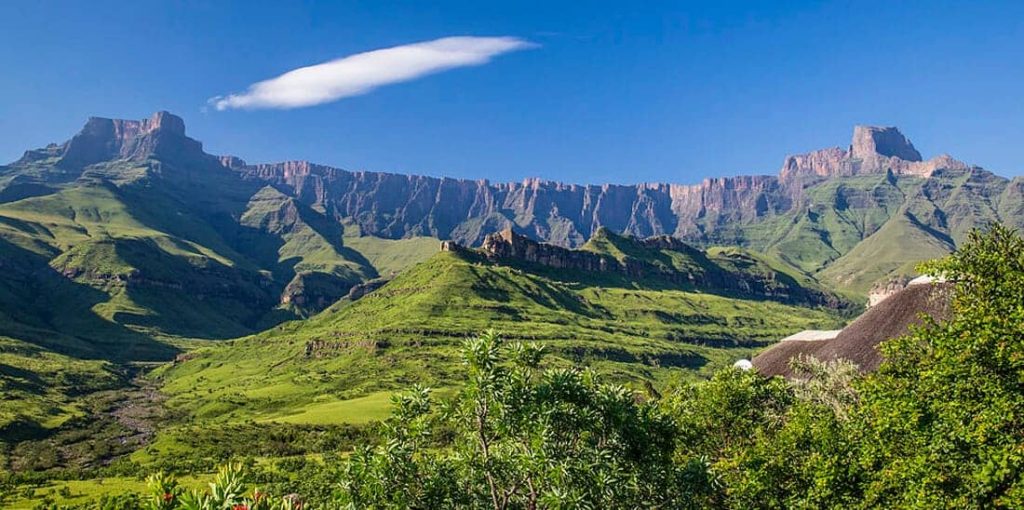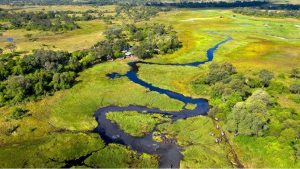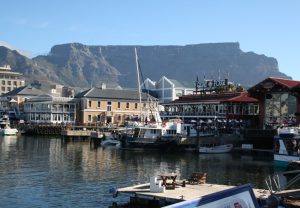South African Travel Tips when visiting Kwazulu-Natal
The Kwazulu-Natal Province is a holidaymaker’s sub-tropical, beach and mountain paradise, the Kingdom of the Zulu has something for everyone set in magnificent natural beauty. Coast-to-coast the beaches and quaint villages attract sun worshippers who are drawn to the warm Indian ocean and all the pleasures it affords. Outdoor enthusiasts love to explore the two World Heritage sites, the uKhahlamba-Drakensberg Park and the Greater St Lucia Wetland Park, as well as the game parks and famous battlefields. Diverse cultures, from the San bushmen with their rock art, Zulu villagers with their fearsome warriors and colourful dancing maidens, Griqua trekkers with their pioneering spirit and Indian restaurateurs with their hot, sought-after curries, enrich the province with a wide variety of experiences to be had. With all this on its doorstep, it is no wonder that Durban has become the top convention destination in Africa – a veritable antithesis of the all work, no play philosophy.
CLIMATE:
Coastal areas enjoy a sub-tropical climate with sunshine year round, although rain storms can occur in summer. The humidity is lower in June and July, making it ideal times to visit. Weather is also warm and sunny for most of the year in the Drakensberg, but in winter night time temperatures can drop below freezing and snowfalls are not uncommon. At Sodwana Bay, a world-class diving destination, conditions are good throughout the year, but best from April through to September. Water temperatures here are usually above 20 degrees Celsius and in summer can reach 29 degrees Celsius. The Midlands is a summer rain fall area with warm, sunny summers and cold winters, with night time temperatures dropping below zero in parts.
SHOPPING:
Shopping is an elevated activity in KZN with entire routes dedicated to this pleasure. The Midlands Meander offers a wide variety of arts and crafts including pottery, sculptures and leather-work, ideally interspersed with stops at cosy inns for a taste of country fare and home-made brews with names like ‘Pickled Pig’ or ‘Pie Eyed Possum’. Ethnic Zulu pieces on the beaches, cultural villages and curio centres e.g. the Workshop include intricate beadwork, wood carvings, baskets and pottery. In Durban, the choices vary from luxury shopping mall merchandise to downtown Indian markets where you’ll find the best curry spices in the country and quality African craft items at the African Art Centre at Tourist Junction. Also visit the Heritage Market in Hillcrest for more local goods. Other places to shop include: Point Waterfront Fleamarket, The Pavillion, Gateway Theatre of Shopping, La Lucia Mall.
TOP ATTRACTIONS DESCRIPTION:
uKhahlamba-Drakensberg:
Park A gigantic mountain range filled with eco treasures, this World Heritage Site also has outstanding cultural properties in the approx. 6000 San rock art sites showing the earliest specimens of rock art where colour and dimension were introduced. Many endemic and threatened species can be found here e.g. the Bearded Vulture and unique alpine vegetation occurs. Well-marked trails make the area a hiker’s paradise, other ideal outdoor activities include fly-fishing, rock-climbing, mountain biking, ice climbing, abseiling, paragliding, horseriding and 4×4 trails. Don’t miss the famous Amphitheatre, Cathedral Peak, Giant’s Castle, the second highest waterfall in the world – the Thukela Falls and the majestic Mnweni Valley in the north to central area. In the south, find 26 peaks that are higher than 10,000 feet (3050m).
Greater St Lucia Wetland:
Park A World Heritage Site that is one of the last remaining sub-tropical areas containing its original diverse components of wild plants and animals. Five interlinked ecosystems can be found including a marine system, coastal dune system, lake systems, swamps and an inland system of ancient shoreline terraces and dry savannah. Don’t miss whale watching and also visit Sodwana Bay, a world-class diving destination also popular with fishermen. Here the rare ‘fossil’ fish, the ceolacanth, thought to be extinct, was recently captured on video.
Durban & Surrounds:
South Africa’s third-largest city, Durban is Africa’s most successful convention destination and its ‘Golden Mile’ beachfront offer magnificent swimming beaches and sports facilities. Apart from this, the city’s cultural mix offers excellent entertainment and shopping, from energetic Zulu dances to the famous hot Indian curries. Try a traditional rickshaw ride while exploring.
The Midlands:
Often compared with the Midlands in England, this area comprises wide open areas of green hills, lush pastures and extensive forests. Follow the Midlands Meander, a world-class arts & crafts cottage industry along a well-organised route and don’t miss Howick Falls. Ideal for outdoor activities including whitewater rafting, also features top sports events e.g. the Midmar Mile – the world’s biggest inland swimming race.
South Coast:
A string of small holiday towns cater for fun-lovers all year round. Excellent conditions for bathing, surfing, fishing, scuba diving and dolphin and whale watching. Also known for its golf holidays with over 12 golf courses.
North Coast:
Sea-side resorts set in King Shaka territory, famous for its bottle-nose dolphins. Ideal for bathing, surfing, skin and scuba diving, rock and skiboat fishing or exploring the rock pools.
Zululand’s Game Parks:
The biggest concentration of game parks in the province, with the big bushveld game reserves of Mkuze and Hluhluwe-Umfolozi main attractions. Apart from Big 5 game viewing (lion, buffalo, rhino, leopard and elephant), the reserves are also renowned for its birds, especially Mkhuze, hippo, crocodiles and giraffe. While in the area, don’t miss one of the traditional Zulu villages; in some you can even sleep over in beehive huts. In September, the annual Royal Reed Dance at the Royal Residency of King Goodwill Zwelithini in Nongoma must not be missed.
The Battlefields:
Rich in history, this province features the largest concentration of Boer, British and Zulu battlefields in southern Africa. Numerous sites and routes can be explored with Isandlwana, Rorke’s Drift, Majuba, Spioenkop, Thalana and Blood River main battle sites that will be brought alive by the stories of a specialist tour guide.
Valley of 1000 Hills:
Starting approx. half an hour’s drive from Durban, a tourist route of craft shops, restaurants and magnificent scenery can be explored. Highlights include the PheZulu Safari Park for its Zulu warrior dancing, ethnic curios, bush drives, sangomas, crocodile and snake park; the 3-hour Choo Choo Train trip through the valley on the last Sunday of every month and the On Air raptor display, where you can watch raptors fly over the valley demonstrating their hunting techniques.
Book flights to Durban from Cape Town and experience what the province of Kwazulu-Natal has to offer.
Source by Gerald Crawford






